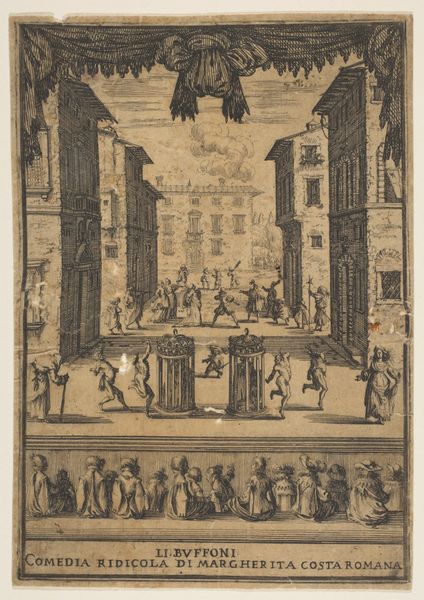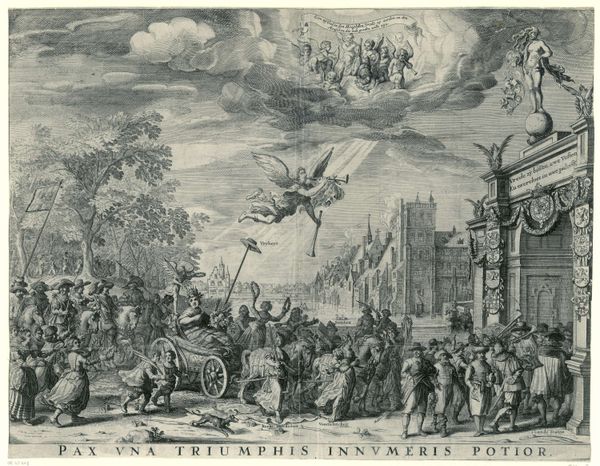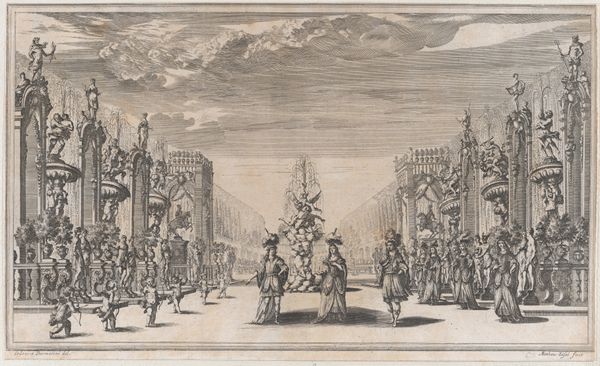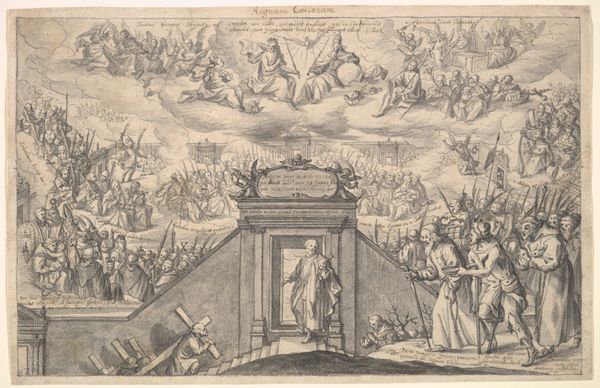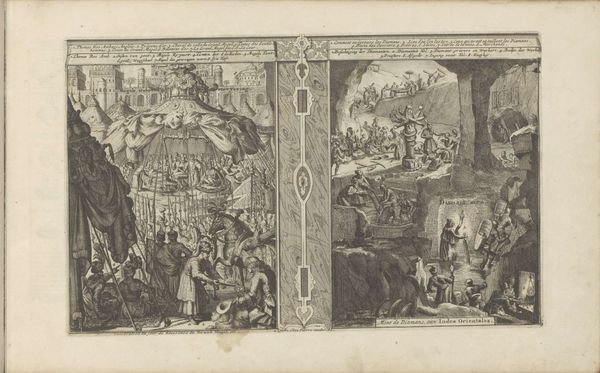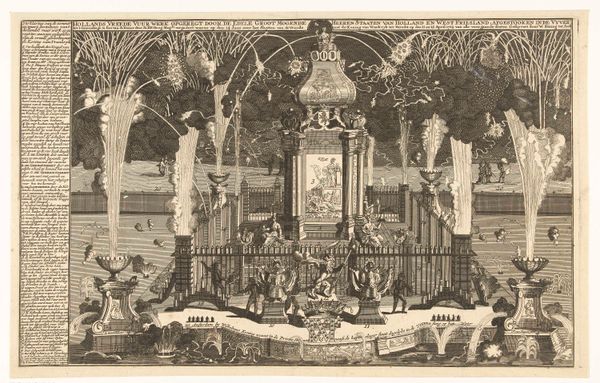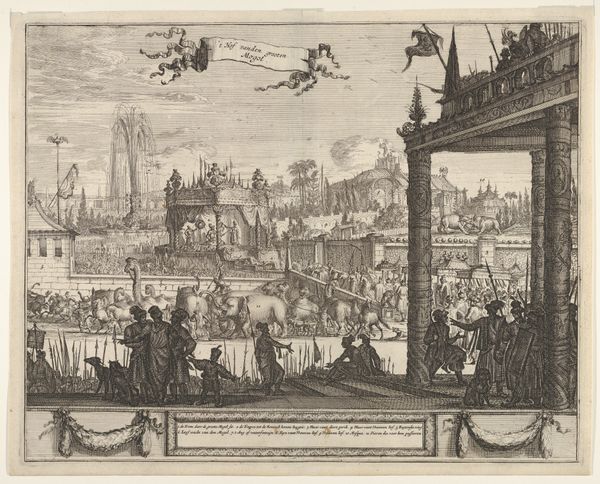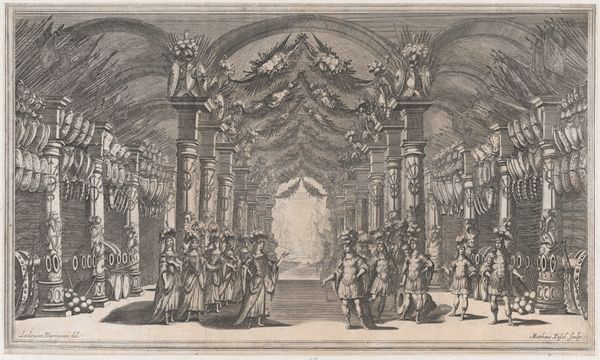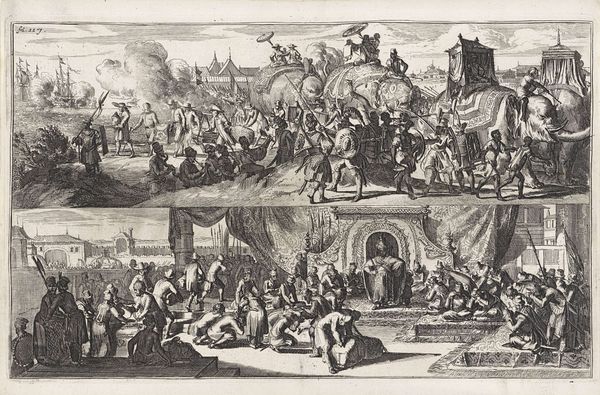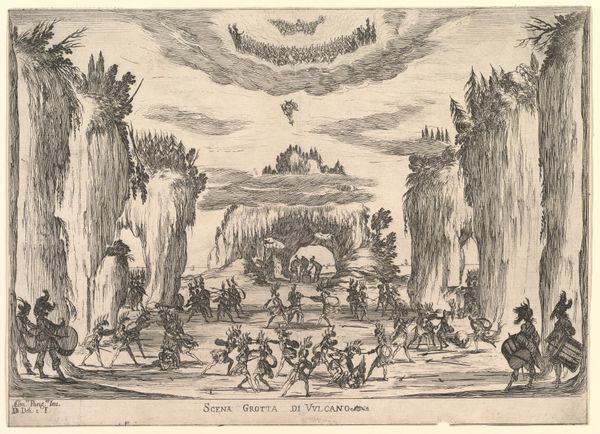
Fifth scene, the Inferno, from 'The marriage of the gods' (Le nozze degli Dei) 1637
0:00
0:00
drawing, print, etching, engraving
#
drawing
#
allegory
#
baroque
# print
#
etching
#
landscape
#
figuration
#
history-painting
#
engraving
Dimensions: Sheet: 7 15/16 x 11 1/2 in. (20.2 x 29.2 cm)
Copyright: Public Domain
Curator: What a scene! It feels utterly chaotic, but compelling. Editor: It certainly does. We're looking at Stefano della Bella's "Fifth scene, the Inferno, from 'The marriage of the gods' (Le nozze degli Dei)," created around 1637. This print, employing engraving and etching techniques, vividly captures a vision of hell. Curator: Etching and engraving, the perfect mediums to illustrate this frenetic scene. Note how the lines create so much texture, especially in the smoke and flames. What was the production of this print dependent upon? It seems almost mass produced with all of this fine detail. Editor: It was, in many ways, meant for wider consumption. Consider the period and the popular appetite for allegorical and historical imagery, prints like these disseminated visual narratives but also power. Curator: Power in spectacle and control of the means to illustrate divine will. This theatrical composition has several focal points; from a God chariot in the sky to a hellish procession below with a swarm of flying figures around it. But it's also set among architecture. This feels deliberate. Editor: Yes, these architectural structures reflect stage design common in Baroque-era theatrical productions. Della Bella worked in the Medici court. This print would've had appeal as both a representation of power and a luxury product on its own terms. These classical facades and monuments serve to show earthly power under assault in a biblical inferno. Curator: The combination of refined printmaking techniques and theatrical design clearly offered powerful social and political statements. A tangible display, carefully conceived for maximum impact. But what lingers with me is this meticulous labor needed to create a work about infernal chaos! Editor: Absolutely. Looking at Della Bella’s work reminds me about how the historical conditions of production influence what messages were sent to an increasingly larger public sphere. The role of images, in political and religious contexts, can not be understated during the Baroque era. Curator: I agree; understanding both the technical process and broader cultural forces certainly enriches the experience of the artwork for me. Editor: Indeed. I think contemplating on these prints helps us think about how institutions and social forces shape even seemingly fantastical artwork like this.
Comments
No comments
Be the first to comment and join the conversation on the ultimate creative platform.


